The Data
As all the testing was performed with the exact same equipment (except the 140mm Noctua Industrial fans replace the 120mm GT fans), using the exact same methods as was used in the 360mm round-up we have decided to keep this review uncluttered by keeping our testing methodology, test set-ups and equipment used in a single location. To see exactly how the tests were carried out, details of the test set ups and equipment used, please head over to the RRU Test Setup page.
Restriction Test
It’s generally agreed that radiators are one of, if not the least restrictive components in the water cooling loop. There are some exceptions however, so this must still be verified through testing:
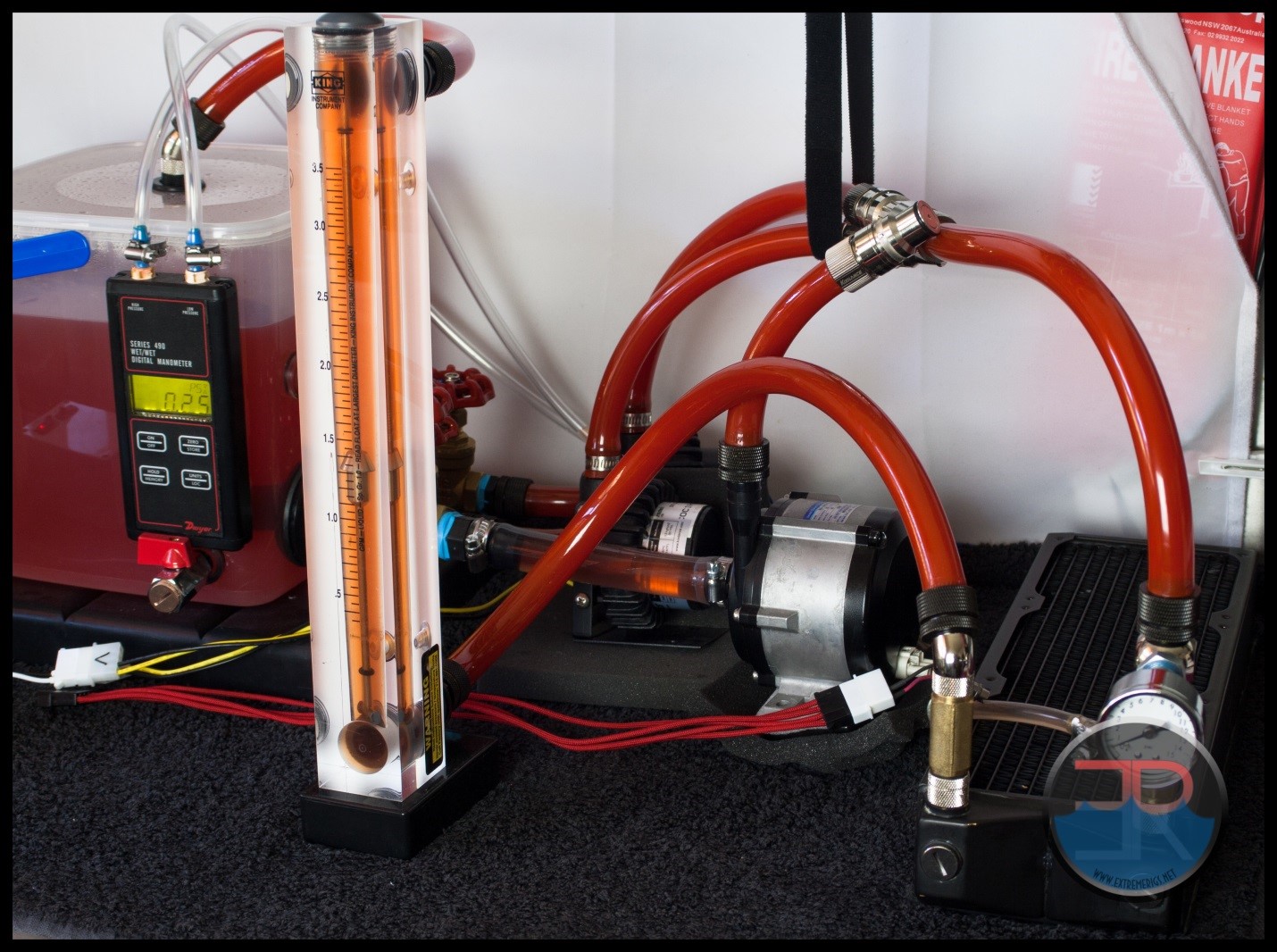 The above photo is for referencing the restriction test bench The CE 420 is not loaded so please disregard the data in the picture as it does not relate to the its test results.
The above photo is for referencing the restriction test bench The CE 420 is not loaded so please disregard the data in the picture as it does not relate to the its test results.
Here is the raw data at the tested flow rates, displaying the measured Differential Pressure across the radiator as flow rate was increased.
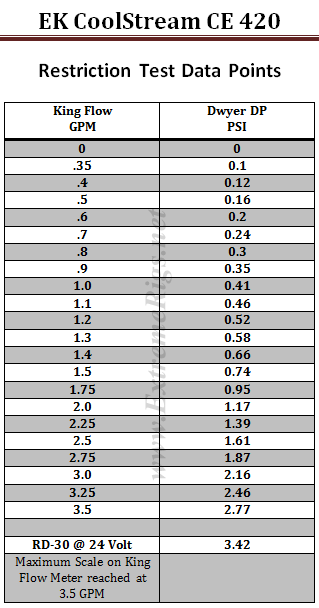 The table numbers indicate that this CE 420 is a low restriction radiator. However numbers in isolation can only tell half the story. By plotting against other components it more easily shows the whole story.
The table numbers indicate that this CE 420 is a low restriction radiator. However numbers in isolation can only tell half the story. By plotting against other components it more easily shows the whole story.
We have decided to use a HeatKiller 3.0 CPU block as the reference in this next plot for two reasons. Firstly there is no chance of the plot being cluttered by curves overlapping and secondly it gives a reference point against a fairly common loop component of average restriction.
As with all previous radiator restriction plots, I have limited the maximum flow rate displayed to 2.0 GPM as I suspect there are very few systems that operate above 2.0 GPM. For more information on how to read a restriction plot check out our guide.
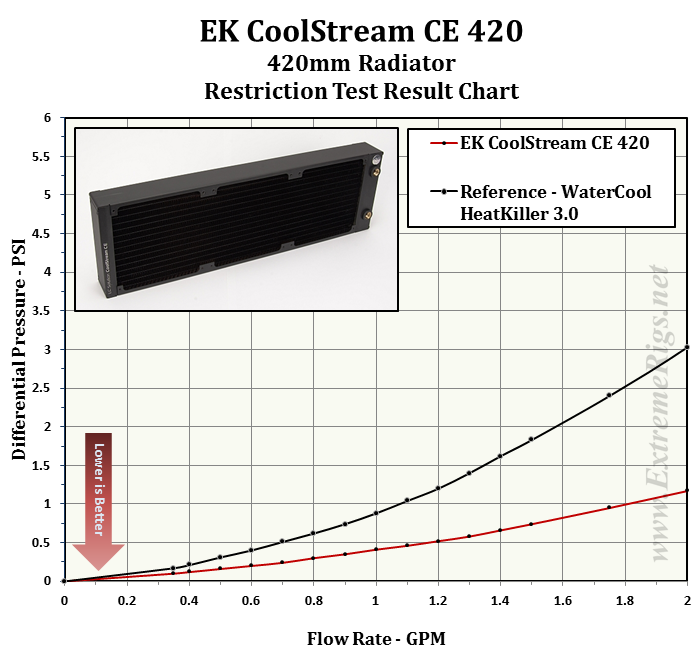 This plot indicates the CE 420 as a low restriction loop component when compared to a CPU block of average restriction, but what about other radiators?
This plot indicates the CE 420 as a low restriction loop component when compared to a CPU block of average restriction, but what about other radiators?
The next three plots show the restriction level at three different flow rates compared to the other 420mm radiator that has been tested so far. We consider the chosen GPM rates to represent systems which have low, medium and high flow rates.
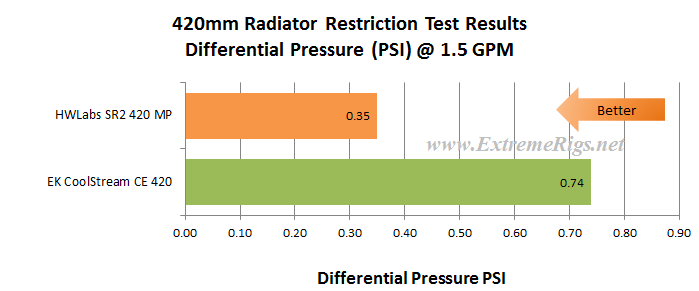 Clearly the CE 420 has the higher restriction level of the 2 rads and this is due to having one less layer of tubes combined with thinner tubes. This is not to say that the EK CE is overly restrictive, just that the SR2 is much less so.
Clearly the CE 420 has the higher restriction level of the 2 rads and this is due to having one less layer of tubes combined with thinner tubes. This is not to say that the EK CE is overly restrictive, just that the SR2 is much less so.
This next plot shows both 420 radiators results for the full range of the flow meter we use for testing the restriction level.
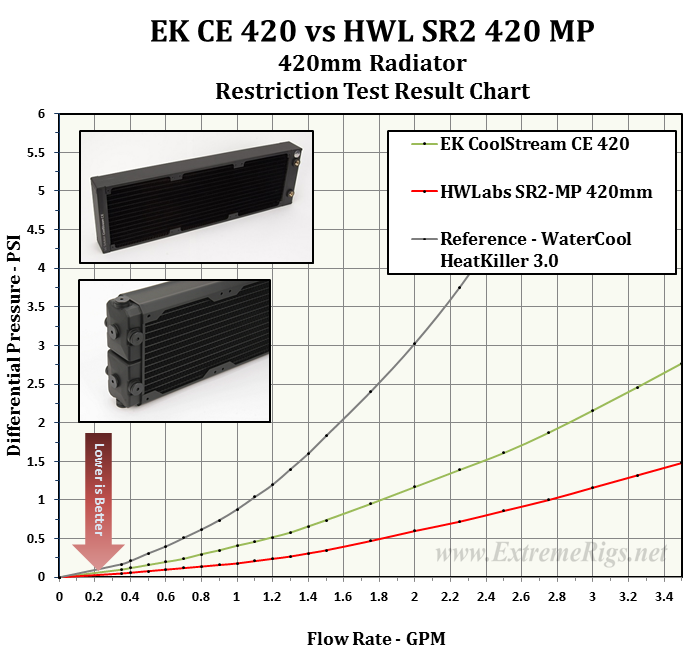 To give a bit more perspective, lets now take a look at where the CE 420 fits in relation to all the radiators we have tested. For this plot only results for 1.0 GPM data point have been used for the comparison.
To give a bit more perspective, lets now take a look at where the CE 420 fits in relation to all the radiators we have tested. For this plot only results for 1.0 GPM data point have been used for the comparison.
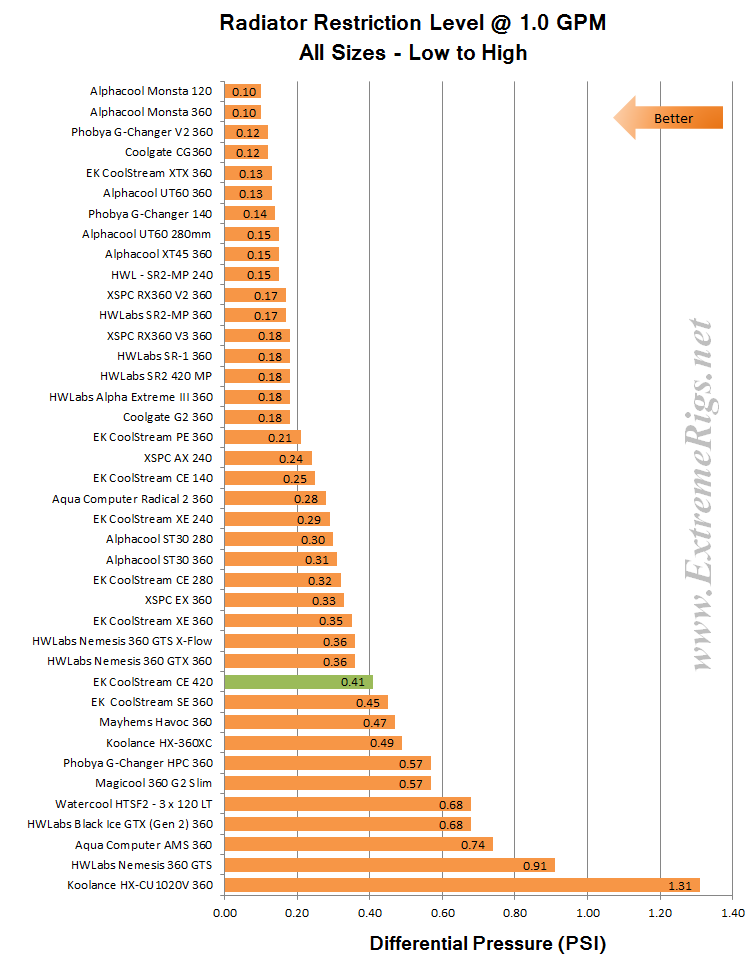 When put into context with all the radiators at 1.0 gpm, we rate the CE 420 as a medium restriction radiator.
When put into context with all the radiators at 1.0 gpm, we rate the CE 420 as a medium restriction radiator.
While we are looking at restriction, it might be interesting to compare the CE 420 against some other EK radiators we have tested.
Onwards to Thermal Performance!








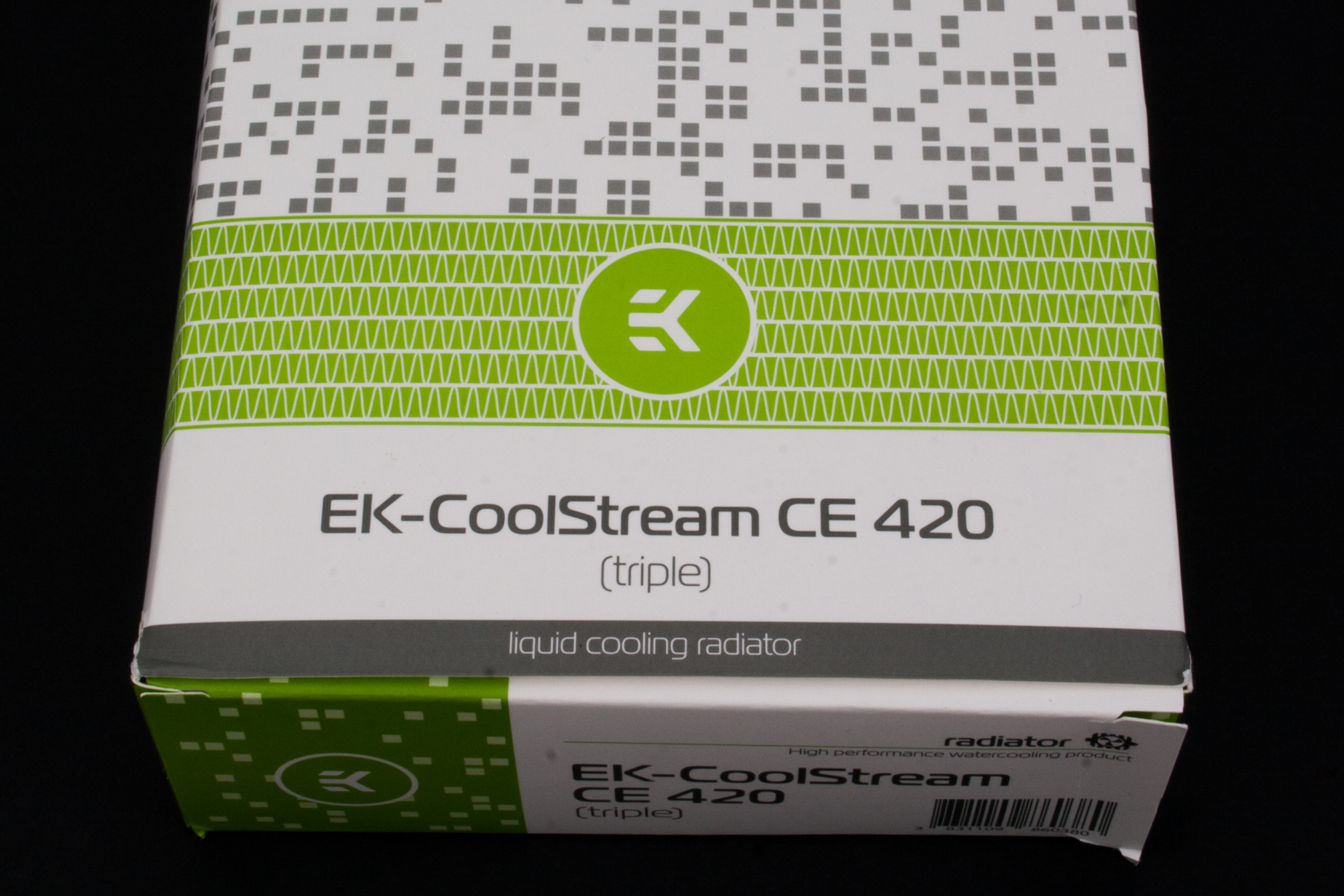
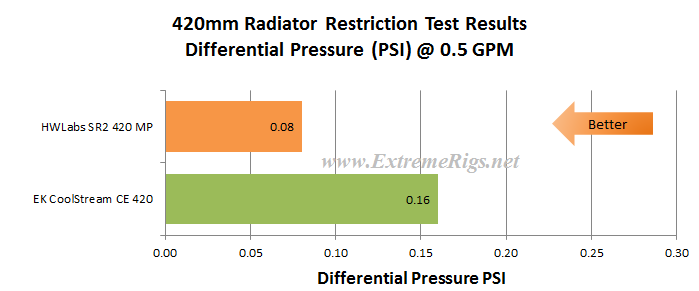
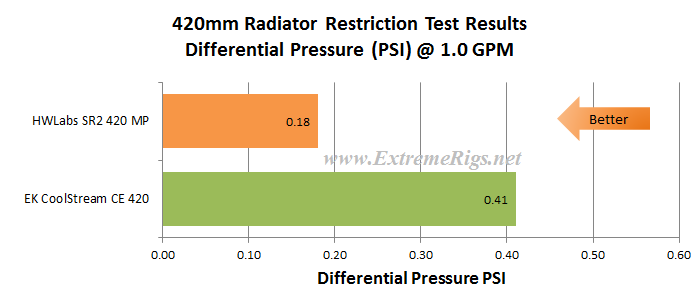
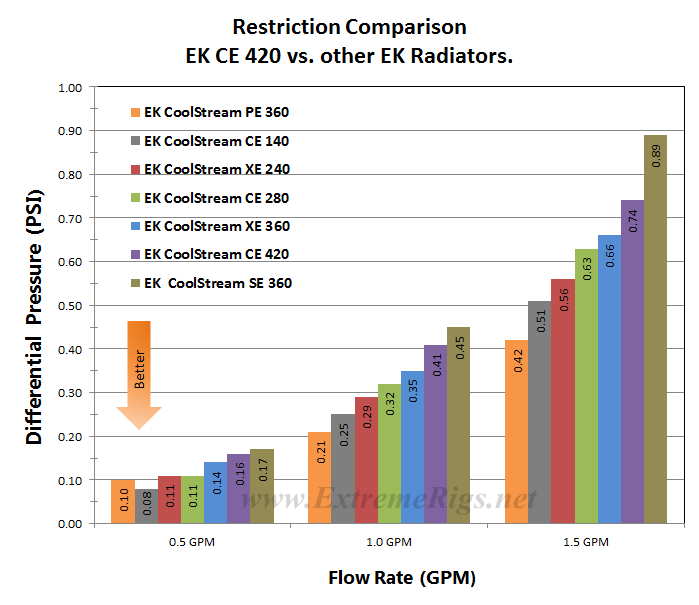



Nice review.
I’m looking forward to CE 280 & nemesis 280 series reviews.
Nice review.
I am looking forward to CE 280 and Nemesis 280 reviews.
Nice review!
Next… vs Nemesis 420 GTX ? ^^
Which is better 420 radiator ?
I would love to see this compared to the Nemesis GTS 420. I’m just about to buy and build my first full custom loop and I’m planning to use the Nemesis GTS rad for it, other than that it will be all EK. With the GTS I can just about do push/pull if needed, with the CE that would not be an option due to space limitations. In CE’s favour though I get a 10% discount on it and could incorporate it into one shipping instead of two. Visually I definitely prefer the European versions of the Hardware Labs radiators though. Choices, choices…
[…] it’s results against the other 140mm radiators we have tested. Previously we reviewed the CE 420 and currently the CE 280 is under scrutiny, so this CE 140 review will form part of the “CE […]
awesome work done, looking forward to the CE 280 and CE 140 reviews (if you’re doing them ;D ).
Thanks,

Review for the CE140 has been published already with the CE280 cued up in the to do list.
EK CoolStream CE 140 Radiator Review
[…] EK CE 420 Radiator Hardware Labs SR2 420 Radiator […]
Comments are closed.